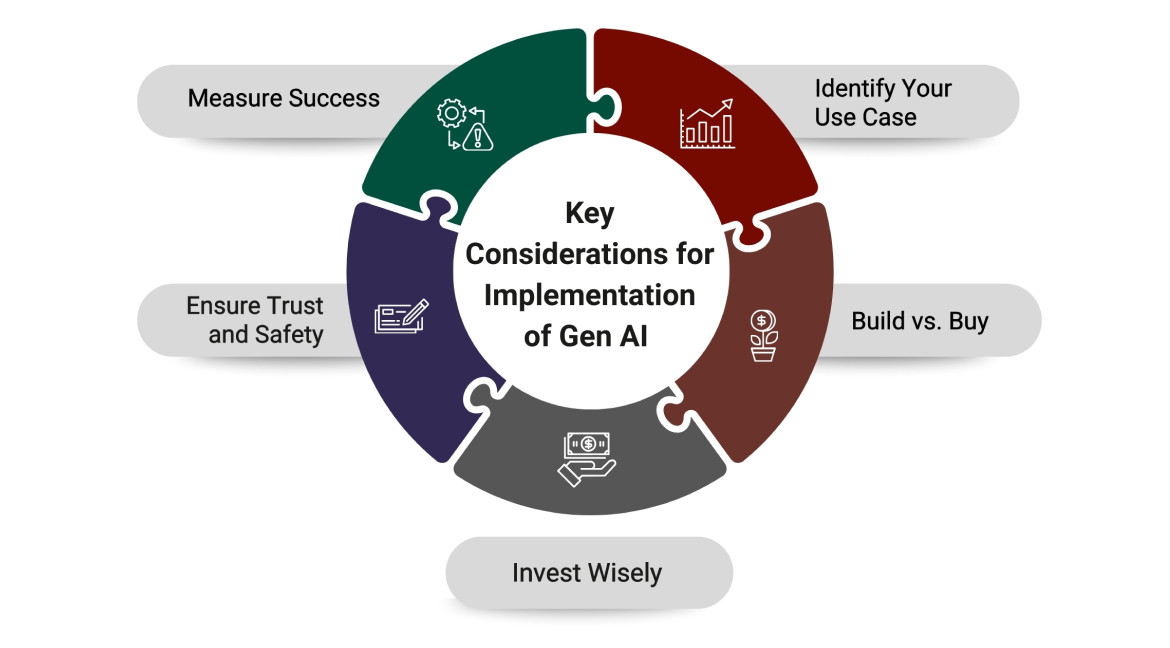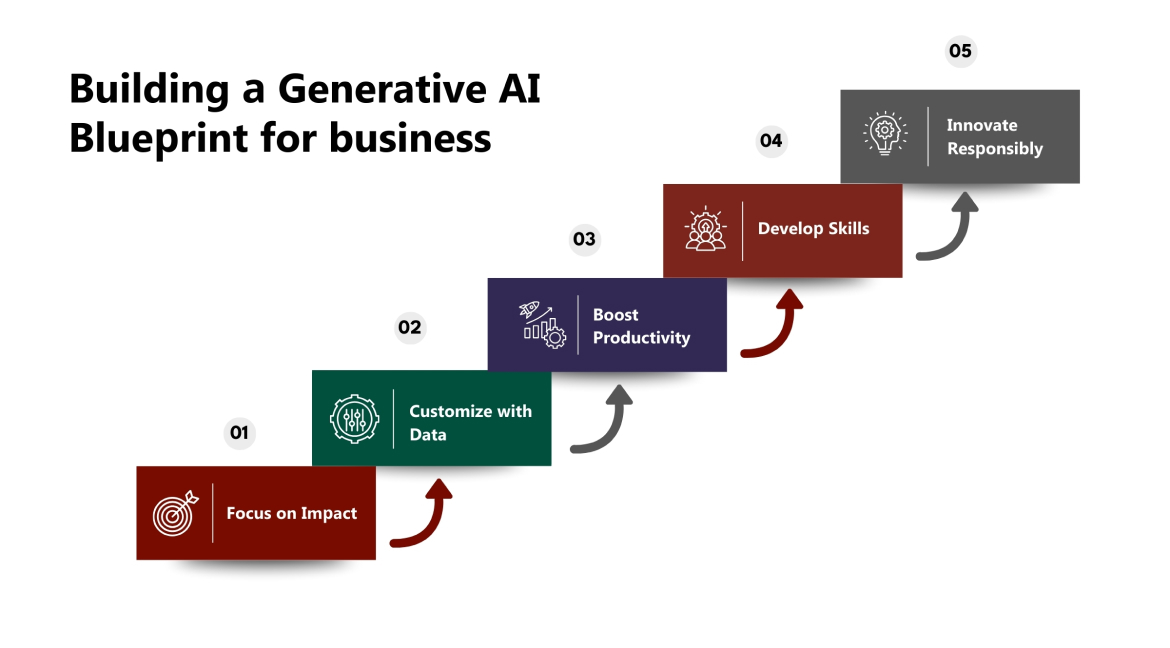Artificial intelligence (AI) is transforming the business world, and generative AI is leading the charge. For business leaders, this technology offers tons of possibilities to boost efficiency, spark innovation, and stay competitive. But it also comes with challenges like costs, risks, and the need for careful planning.
This article breaks down what business leaders need to know about generative AI, drawing from expert insights and practical strategies to help you make the most of this powerful tool.
Generative AI, or Gen AI, is a type of AI that creates new content from existing data. Unlike traditional AI that predicts or analyzes, generative AI can produce text, images, music, or even code based on what it learns. Think of it as a creative partner -feed it data like product details or customer feedback, and it can generate a website description, a marketing campaign, or a custom design. This ability makes generative AI for business a game-changer across industries.
For example, a company launching a solar-powered bicycle could use Gen AI to draft product descriptions, press releases, and social media posts in minutes, saving time and effort. While humans still need to review the output, the process is much faster than starting from scratch. With about 60% of Canada’s workforce already using generative AI at work, its impact is growing fast.
Generative AI for business opens doors to new possibilities. Industry experts like Seamus Blackmore, CTO of Trudell Medical International, and Leila Pishdad, Machine Learning Lead at Borealis AI, shared insights at the Ivey Impact Live event that highlight these opportunities.
These uses show why business leaders can’t ignore generative AI.
Getting started with generative AI for business requires smart decisions. Here are five critical areas business leaders need to focus on, based on expert advice and industry insights.

Every business is unique, and generative AI works best when tailored to specific needs. Whether it’s healthcare analyzing patient data, retail optimizing prices, or finance detecting fraud, the key is finding a project that fits. Start by asking tech providers for examples from similar companies to guide your choice.
Business leaders face a big choice: build custom Gen AI tools or buy ready-made solutions. Building makes sense if you have unique data or expertise, but it needs skilled talent and time. Buying is faster and often cheaper, especially with pre-trained models that can be customized. Consider your timeline, integration with existing systems, and long-term costs before deciding.
Implementing generative AI costs money, think high-end hardware, skilled staff, and secure data storage. However, pre-trained models can reduce expenses by letting you add your data with fewer resources. The return on investment comes from increased efficiency and innovation, making it worth the effort for many business leaders.
Gen AI can “hallucinate”, producing false or biased outputs, which poses risks to reputation and trust. Use guardrails like topical limits (e.g., restricting a chatbot to customer queries), safety filters (ensuring accurate responses), and security controls (protecting data). This builds confidence in generative AI for business.
Measurement is critical. Business leaders must define goals, like time saved or customer satisfaction, before deploying Gen AI. Track these metrics to see if the technology delivers value, ensuring it’s not just a trendy add-on.
While generative AI for business offers opportunities, it also brings risks that business leaders must address.
To succeed, business leaders need a clear plan. This five-step blueprint, inspired by industry guides, helps prioritize and deploy generative AI for business.

For generative AI for business to thrive, business leaders must set the stage. Here’s how:
Looking ahead, generative AI will reshape how business leaders work. Experts predict it will enhance planning and decision-making, like chatting with AI instead of clicking menus. This shift will demand leaders who understand Gen AI’s strengths and limits.
Fredrik Odegaard, who moderated the Ivey event, reminds us that business leaders must lead this change. “It’s up to us to shape the AI revolution,” he says. With the right strategy, generative AI for business can drive a better future, balancing innovation with responsibility.
Ready to dive in? Business leaders can:
Generative AI for business is a powerful tool that offers business leaders a chance to innovate, save time, and grow. From personalizing sales to improving operations, the opportunities are vast. But risks like costs, hallucinations, and compliance require careful management. By building a solid blueprint, fostering skills, and creating the right conditions, leaders can harness Gen AI successfully.

CredBadge™ is a proprietary, secure, digital badging platform that provides for seamless authentication and verification of credentials across digital media worldwide.
CredBadge™ powered credentials ensure that professionals can showcase and verify their qualifications and credentials across all digital platforms, and at any time, across the planet.

Keep yourself informed on the latest updates and information about business strategy by subscribing to our newsletter.